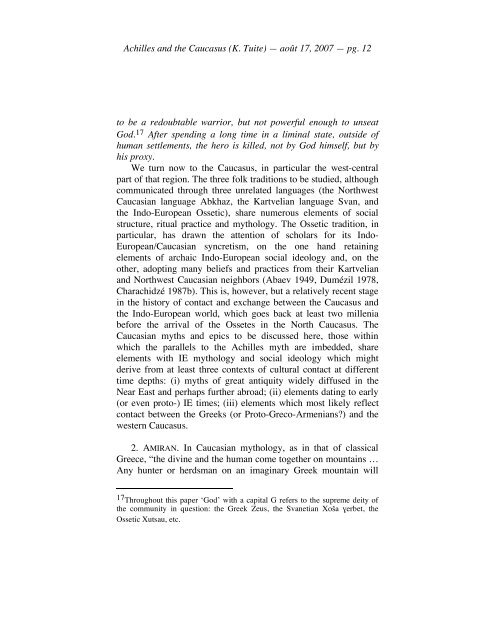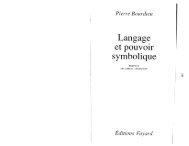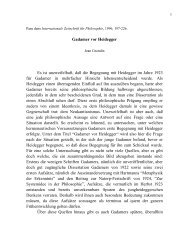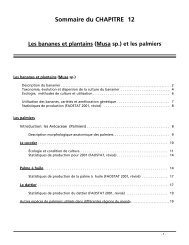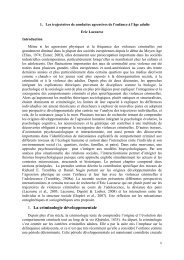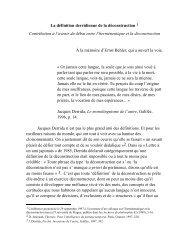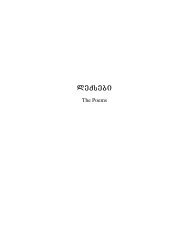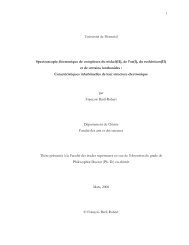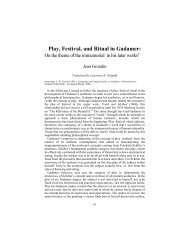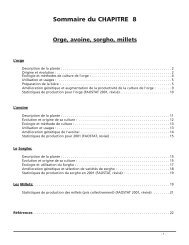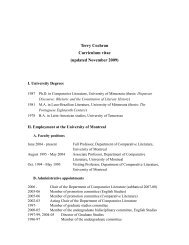Achilles and the Caucasus - Université de Montréal
Achilles and the Caucasus - Université de Montréal
Achilles and the Caucasus - Université de Montréal
You also want an ePaper? Increase the reach of your titles
YUMPU automatically turns print PDFs into web optimized ePapers that Google loves.
<strong>Achilles</strong> <strong>and</strong> <strong>the</strong> <strong>Caucasus</strong> (K. Tuite) — août 17, 2007 — pg. 12<br />
to be a redoubtable warrior, but not powerful enough to unseat<br />
God. 17 After spending a long time in a liminal state, outsi<strong>de</strong> of<br />
human settlements, <strong>the</strong> hero is killed, not by God himself, but by<br />
his proxy.<br />
We turn now to <strong>the</strong> <strong>Caucasus</strong>, in particular <strong>the</strong> west-central<br />
part of that region. The three folk traditions to be studied, although<br />
communicated through three unrelated languages (<strong>the</strong> Northwest<br />
Caucasian language Abkhaz, <strong>the</strong> Kartvelian language Svan, <strong>and</strong><br />
<strong>the</strong> Indo-European Ossetic), share numerous elements of social<br />
structure, ritual practice <strong>and</strong> mythology. The Ossetic tradition, in<br />
particular, has drawn <strong>the</strong> attention of scholars for its Indo-<br />
European/Caucasian syncretism, on <strong>the</strong> one h<strong>and</strong> retaining<br />
elements of archaic Indo-European social i<strong>de</strong>ology <strong>and</strong>, on <strong>the</strong><br />
o<strong>the</strong>r, adopting many beliefs <strong>and</strong> practices from <strong>the</strong>ir Kartvelian<br />
<strong>and</strong> Northwest Caucasian neighbors (Abaev 1949, Dumézil 1978,<br />
Charachidzé 1987b). This is, however, but a relatively recent stage<br />
in <strong>the</strong> history of contact <strong>and</strong> exchange between <strong>the</strong> <strong>Caucasus</strong> <strong>and</strong><br />
<strong>the</strong> Indo-European world, which goes back at least two millenia<br />
before <strong>the</strong> arrival of <strong>the</strong> Ossetes in <strong>the</strong> North <strong>Caucasus</strong>. The<br />
Caucasian myths <strong>and</strong> epics to be discussed here, those within<br />
which <strong>the</strong> parallels to <strong>the</strong> <strong>Achilles</strong> myth are imbed<strong>de</strong>d, share<br />
elements with IE mythology <strong>and</strong> social i<strong>de</strong>ology which might<br />
<strong>de</strong>rive from at least three contexts of cultural contact at different<br />
time <strong>de</strong>pths: (i) myths of great antiquity wi<strong>de</strong>ly diffused in <strong>the</strong><br />
Near East <strong>and</strong> perhaps fur<strong>the</strong>r abroad; (ii) elements dating to early<br />
(or even proto-) IE times; (iii) elements which most likely reflect<br />
contact between <strong>the</strong> Greeks (or Proto-Greco-Armenians?) <strong>and</strong> <strong>the</strong><br />
western <strong>Caucasus</strong>.<br />
2. AMIRAN. In Caucasian mythology, as in that of classical<br />
Greece, “<strong>the</strong> divine <strong>and</strong> <strong>the</strong> human come toge<strong>the</strong>r on mountains …<br />
Any hunter or herdsman on an imaginary Greek mountain will<br />
17 Throughout this paper ‘God’ with a capital G refers to <strong>the</strong> supreme <strong>de</strong>ity of<br />
<strong>the</strong> community in question: <strong>the</strong> Greek Zeus, <strong>the</strong> Svanetian Xoša ƒerbet, <strong>the</strong><br />
Ossetic Xutsau, etc.


